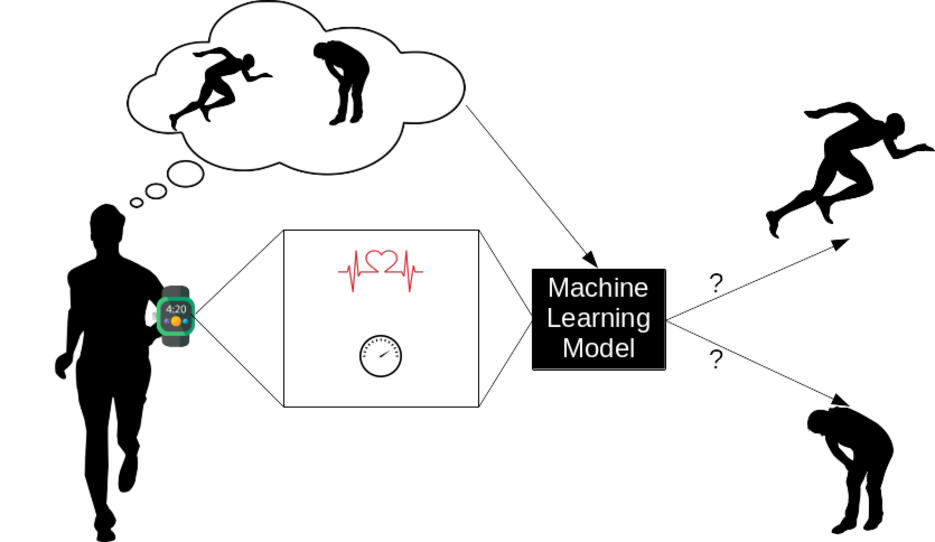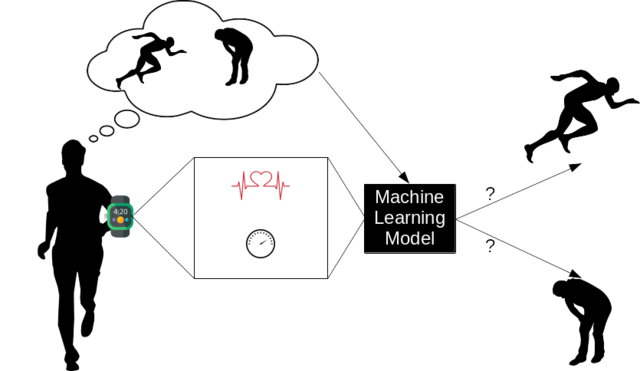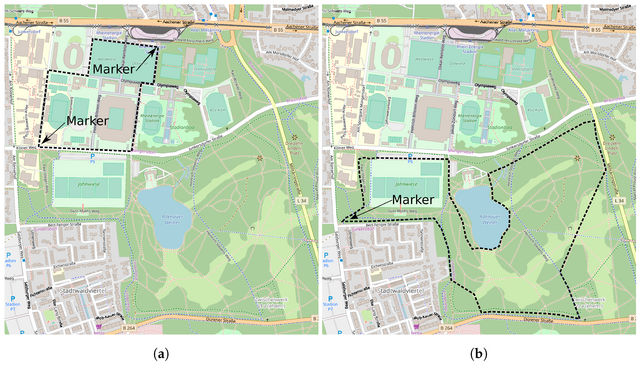Our paper “Smartwatch-Derived Data and Machine Learning Algorithms Estimate Classes of Ratings of Perceived Exertion in Runners: A Pilot Study” was accepted in the MDPI journal sensors within the special issue “sensor-based information for personalized training and exercise”1: Link
Figure 1: Basic idea of our approach. Data derived from the smartwatch can be distinguished by machine learning between two states of exertion. They can contradict the experienced exertion level of the runner. Our approach is to estimate subjective parameters with objective data.
The rating of perceived exertion (RPE) is a quantifiable measure of a subjective feeling: exertion. This rating is based on the strong correlation of the heart rate and external load, for example during physical exercises like running.
The 6-20 Borg scale is a commonly used scale of RPE and is based on this correlation: RPE ~ heart rate / 10. This implies a resting value of 6 with an estimated resting heart rate of 60, and complete exertion at level 20 with an estimated heart rate of 200.
In this pilot study, we aimed to predict two classes of RPE (≤ 15 “Somewhat hard to hard” on Borg’s 6–20 scale vs. RPE > 15 “Hard to very hard”) in runners by analyzing data recorded by a commercially-available smartwatch with machine learning algorithms.
For this, twelve runners were divided into two groups: trained (6) and untrained (6) runners. Both were tasked to run at a constant velocity until complete exertion, i.e. RPE=20. Heart rate, step cadence and velocity were monitored by a smartwatch. Trained runners reported their RPE values at the beginning and after that every 5km round, whereas untrained runners reported their RPE twice in their 2km round (see Figure 2).
Figure 2: Map views of the running tracks. (a) Track of the untrained runners with two reporting points (b) Track of the trained runners with one reporting point.
Source: https://www.mdpi.com/1424-8220/20/9/2637
We achieved top accuracies of 84.8 % for the whole dataset, 81.8 % for the trained runners, and 86.1 % for the untrained runners.
Conclusion: With this study we aimed to predict two classes of RPE for trained and untrained runners. We classified two states of exertion, “Somewhat hard to hard” and “Hard to very hard”, and found that a 1D-CNN revealed the highest accuracy when predicting from the raw sensor data.
Keywords: artificial intelligence; endurance; exercise intensity; precision training; prediction; wearable
1Davidson, P.; Düking, P.; Zinner, C.; Sperlich, B. & Hotho, A. (2020), ‘Smartwatch-Derived Data and Machine Learning Algorithms Estimate Classes of Ratings of Perceived Exertion in Runners: A Pilot Study ‘, Sensors .




